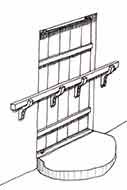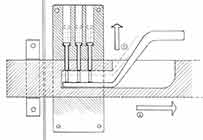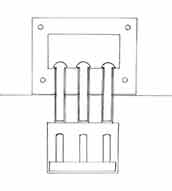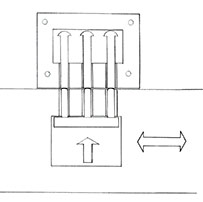Mesopotamia and Ancient Egypt, circa 2000 BC
The earliest door lock consisted of a wooden crossbar on two wooden brackets mounted on the door and the door frame. The next stage in development was the use of a key.
 |
| Bolted and barred. Sketch by the author. |
Since barred doors could only be locked from within, the next improvement was a wooden lock with a short beam, or bolt, outside the door.
 |
| Egyptian pin tumbler locks of wood with wooden key. Sketch by the author. |
The beam was drawn aside with a key of the same material. The key’s job was to lift the tumblers that held the beam or bolt in place. The bolt was opened or closed when its free end was pushed by the key into or out of a wooden guide in the door frame.
These wooden pin tumbler locks with keys were used as far back as in Ancient Egypt, which is why they are often called Egyptian locks. But in fact there is much evidence to indicate that the Egyptians took over this type of lock from the earlier cultures in Mesopotamia.
The Roman Era, circa 200 AD
The Romans’ metal pin tumbler locks evolved out of the Egyptian wooden locks. They were often small masterpieces in precision and design. The keys were usually made of bronze and iron, but sometimes of precious metals, and were worn on the fingers as rings.
At the same time, door locks with wooden pin tumbler bolts were used, which were an evolution of the Egyptian locks with tumbler pins. The way these locks worked was that the key was inserted through the door and lifted the metal pins, after which the key could draw the beam or bolt aside.
 |
| Roman pin tumbler locks in closed and open position. Sketch by the author. |
 |